The largemouth bass (Micropterus salmoides) is the U.S.A.’s premier freshwater gamefish. An estimated 30 million Americans target the species, creating a $60 billion dollar industry. I admit it, I’m one of those 30 million Americans. I’m an avid fisherman and the largemouth bass has been my favorite species to target ever since I was a small boy catching bluegills alongside a dinky little farm pond, where the comparatively elusive and gigantic largemouth bass ruled as the apex predator. Sure, there are larger and harder fighting fishes out there, but there’s something special and nostalgic for me about pursuing bigmouths in lily pad covered ponds.
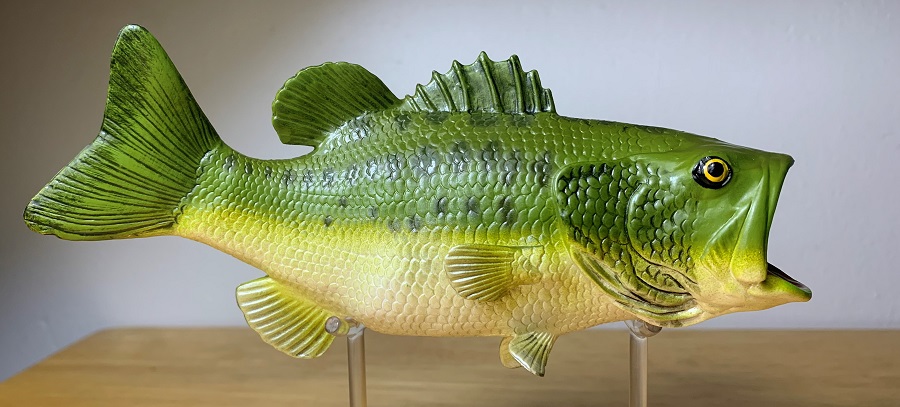
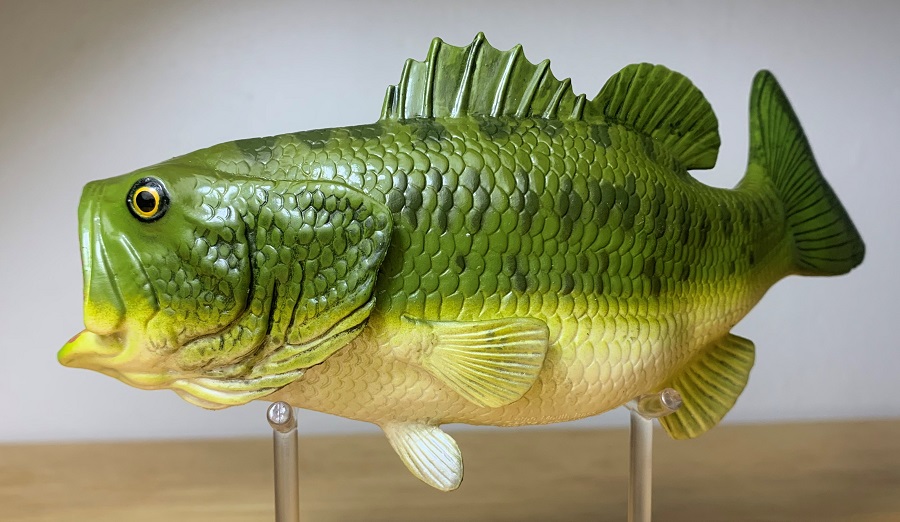
Due to its popularity the largemouth bass has been widely introduced around the world. According to Fishbase the species is now found in 77 countries and islands. It ranks as number 54 on the 100 Worst Invasive Species list. Its original range was the Great Lakes and Mississippi River basins, from southern Quebec to northern Mexico. It is now found throughout the United States, of course. Even those I pursue in Maryland are not actually native.
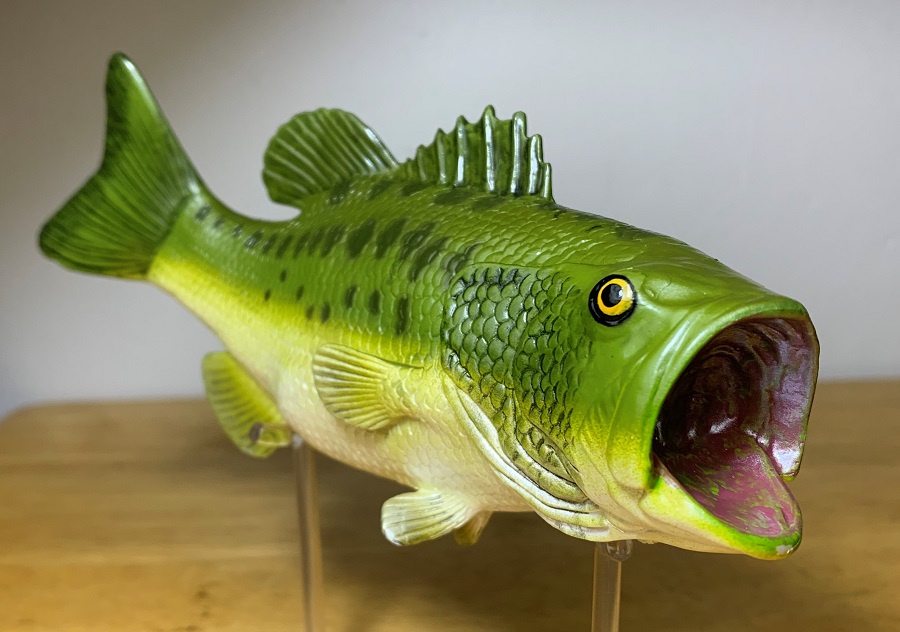
No matter where it’s found the largemouth bass is a member of a uniquely North American family of fishes, the Centrarchidae. These fishes are commonly known as sunfishes (no relation to the Mola genus) and include other popular gamefish such as crappie, bluegill, pumpkinseed, and other basses belonging to the same genus, like the spotted and smallmouth bass.
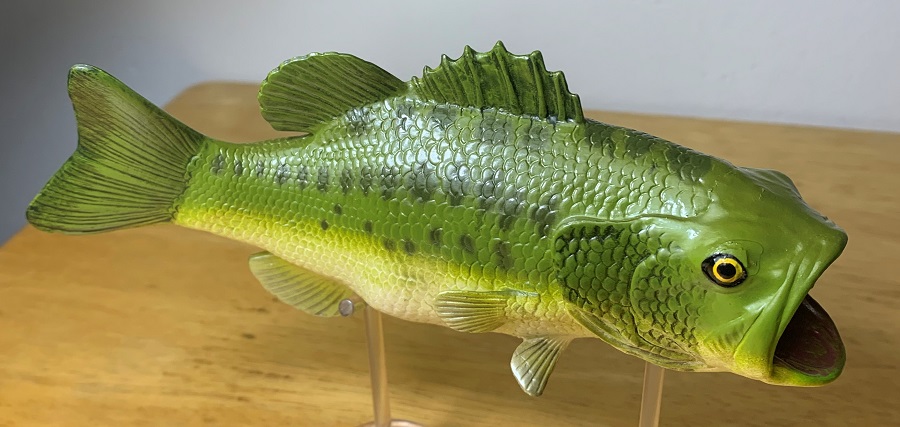
Quite a few figures representing the ditch pickle exist, including those by K&M, Kaiyodo, Yujin, and Toy Fish Factory. None of them are particularly good except for the Yujin largemouth, which is fantastic. Today we’re reviewing the Incredible Creatures largemouth bass by Safari.
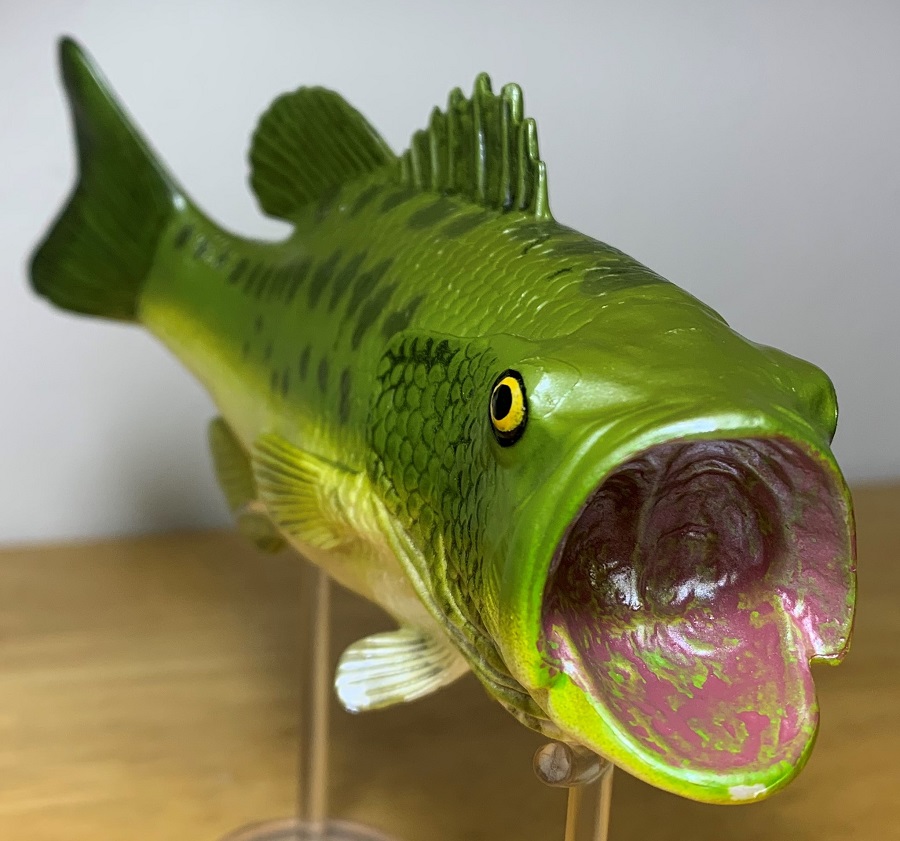
The Safari Ltd. largemouth bass was released in 2015 and measures 6” (15.24 cm) in total length. The actual largemouth bass is the largest member of the Centrarchidae family. They average about 16” (40.64 cm) but can reach a maximum length of 38” (97 cm). Both world record largemouth bass, one caught in Georgia, U.S.A., and another in Japan weighed over 22 lbs. (9.9 kg) but a foul-hooked specimen weighing 25.01 lbs. was caught in California, U.S.A.
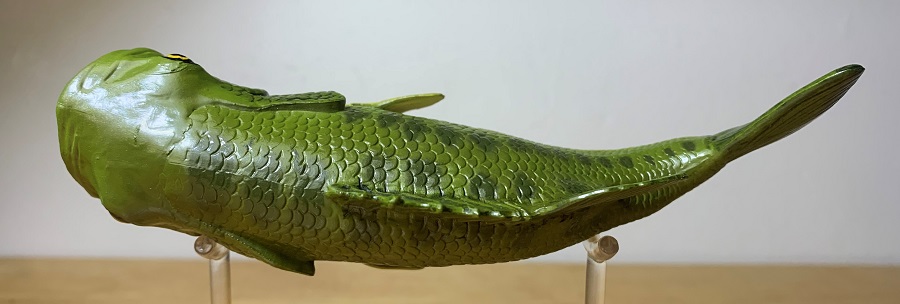

Scaled down from an average length the Safari figure comes out at 1/2.6 in scale. Scaled down from the maximum length the figure comes out to be 1/6.3 in scale. When I started collecting extant animals, I never intended to collect fishes in this scale, but after acquiring the Marsh Lab set by Safari, I decided that I would continue expanding my “standard size” fish collection.
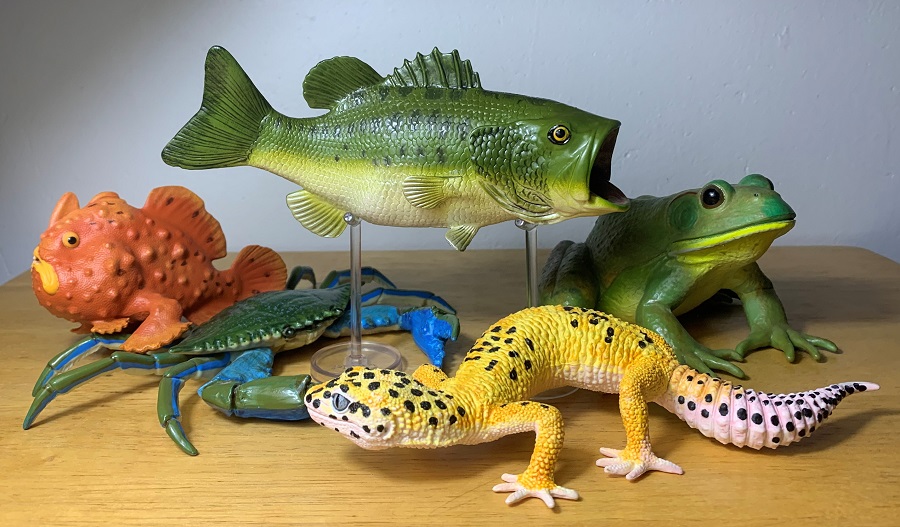
The Safari largemouth bass is presented exactly how the mounted bucketmouth in your uncle’s cabin would be, mouth agape and with a gentle upward and rightward curve in the body, as if the fish were leaping and trying to shake a fisherman’s hook. If that imagery doesn’t suit you then it also looks like it might be attacking some surface-dwelling prey, like a frog or a duckling. Largemouth bass are known to eat anything they can fit inside their maw. This includes various fishes, invertebrates like worms and crayfish, frogs and salamanders, snakes, small turtles, and small birds and mammals.
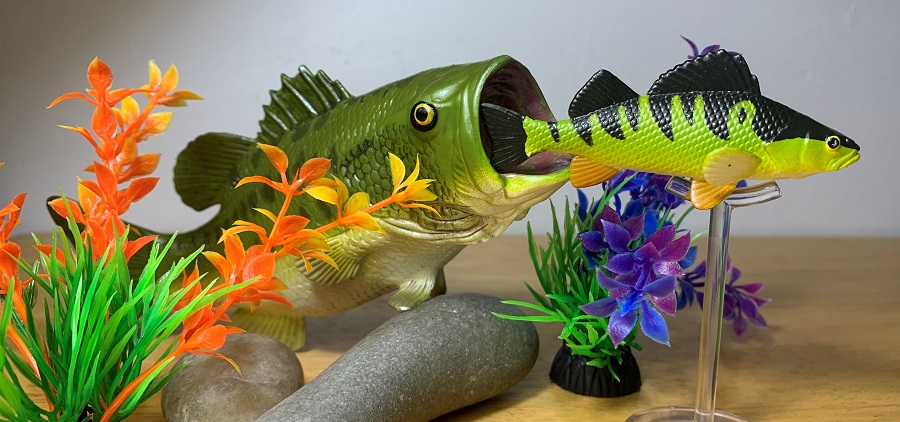
The overall build of the largemouth bass, and this figure, is a long, somewhat laterally compressed, football shaped body. A deep notch divides the spiny and soft potions of the dorsal fin which helps identify the largemouth bass amongst the other black basses (the common name for the genus Micropterus). If the mouth of the figure were closed it would also extend past the eye, another feature useful in identification and the reason the species is called largemouth.
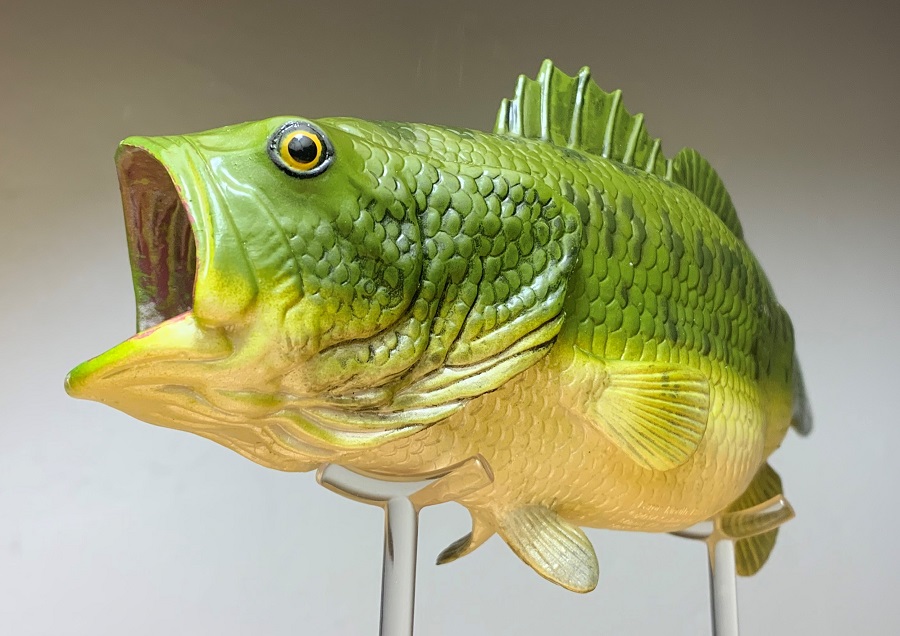
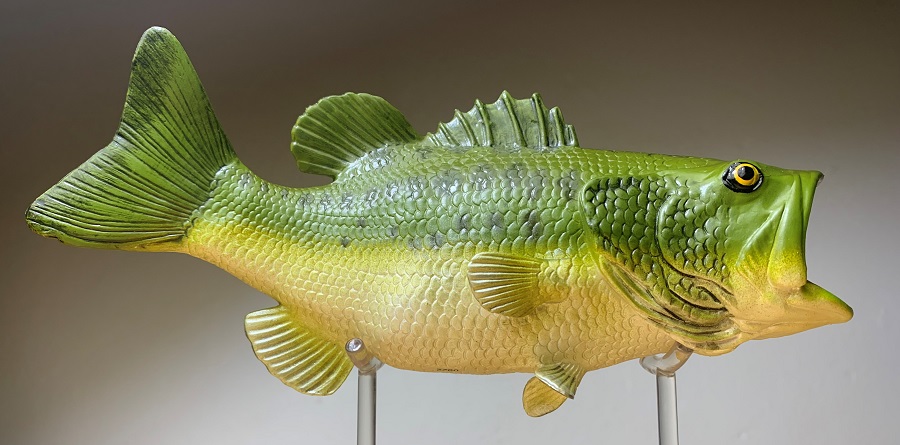
Since they’re easy to count, I counted the fin rays on this figure. A largemouth bass should have 10 dorsal spines, but this figure has 8. There should be 11-14 dorsal soft rays, but the figure has 10. The anal fin should have 3 spines, but the figure has none, and there should be 10-12 soft rays and the figure has 11, so that count is correct. None of this influences my opinion of the figure but I do wish it at least had the spines on the anal fin.
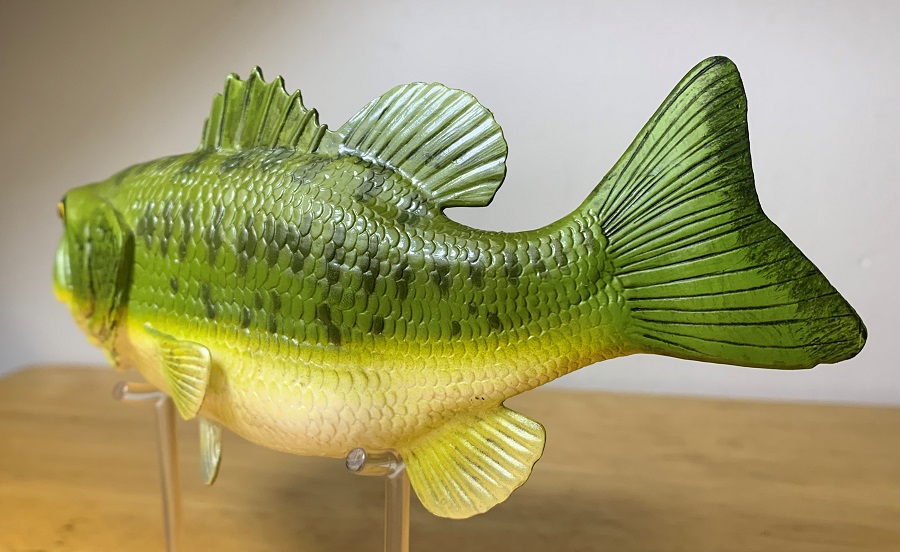
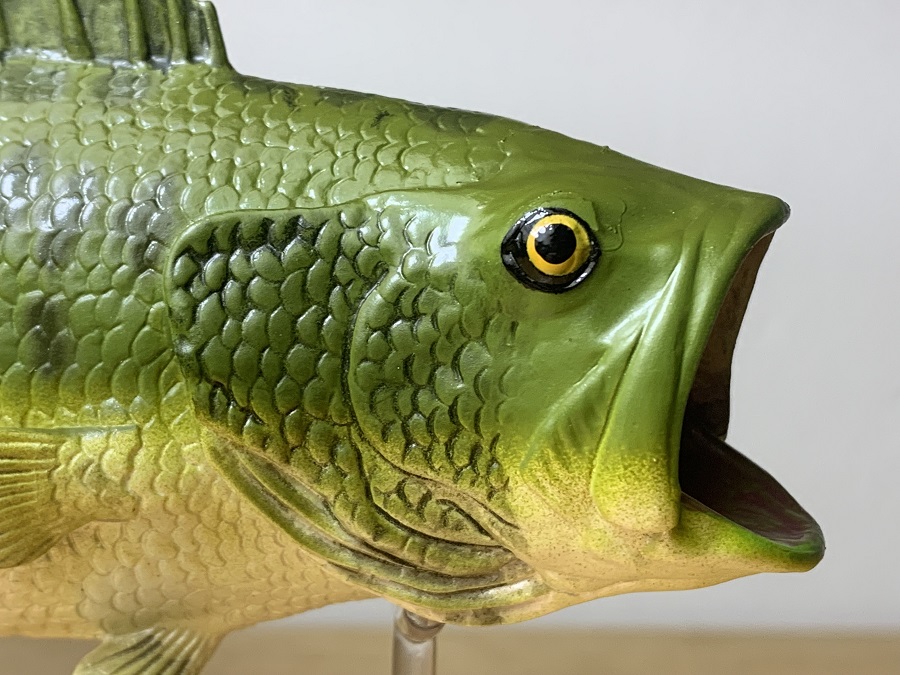
Fine details are well executed on the head where the details of the mouth and operculum are nicely defined, including the branchiostegal rays that are flared out on the underside of the operculum. The inside of the mouth has some texture but is otherwise devoid of detail. There is no sculpted tongue or gills and gill rakers, I also wish the throat was a bit deeper with a sculpted sphincter. This might be nitpicky but if you’re going to sculpt it with an open mouth you might as well go for it. Otherwise, a closed or partially open mouth (like the Safari goliath grouper) would have been preferable. No teeth are sculpted but this is fine as largemouth bass teeth are small and sandpapery. The body has a nice coating of ctenoid scales but there is no apparent lateral line. No vent is sculpted either.

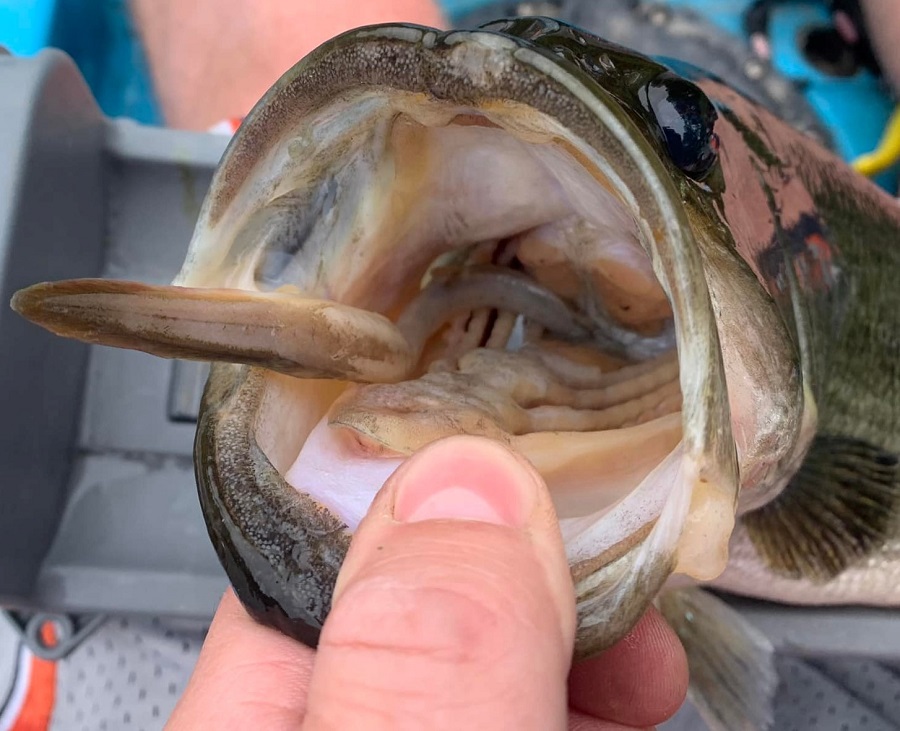
The figure is painted dark green dorsally which fades to lighter greenish yellow along the sides and a white belly. A horizontal band of dark green blotches is painted along the sides. The operculum, and dorsal and caudal fins, have a black wash over them while the pectoral, pelvic, and anal fins have a silvery wash. The inside of the mouth is pink and green. The black rimmed eyes are gold with black pupils. This is an acceptable color scheme for the “green trout”, and I have no issues with it. A bit more green on the lower end of the flanks would have been nice, like on the actual largemouth pictured below.

I should also mention that this figure has stability problems. It is supposed to be supported by the pelvic and anal fins, but the pelvic fins are rather flimsy and easily warped. Mine has never been able to stand the way it should. I’m debating mounting this figure on a little plaque and hanging it over my fireplace.

The Safari largemouth bass is a mostly fantastic figure of one of my favorite animal species and the only figure of this species in the standard size class. Unfortunately, the instability, lack of detail inside the mouth, missing lateral line, and missing anal spines all detract some points from it. If you would prefer a smaller scale figure, then I suggest looking for the Yujin one. I don’t have it myself, but I might still track it down someday. The Safari largemouth bass is currently in production and retails for about $11.50. For that prices it’s decent enough. Highly recommended, don’t let this be the one that got away!
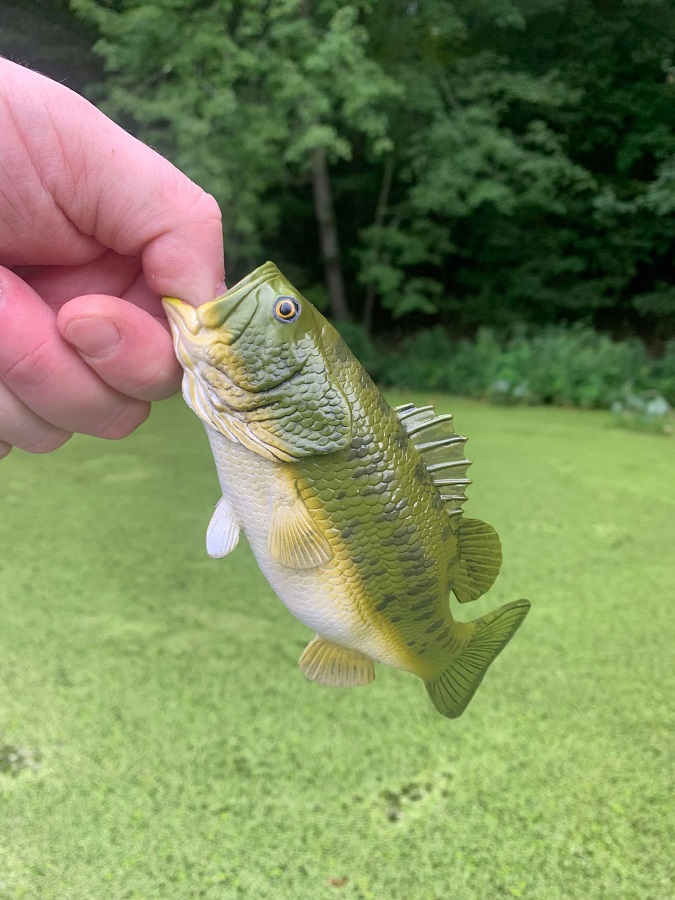
Disclaimer: links to Ebay and Amazon on the AnimalToyBlog are affiliate links, so we make a small commission if you use them. Thanks for supporting us!




Ditch pickle….ha! Loved that.
I have the Kaiyodo version. Mine has a slightly different paint job than the one on TAI (Chocoegg figures often came in more than one paint style) and it looks better than that one (mine has a less-obvious seam, too). That Yujun version is pretty spectacular, though.